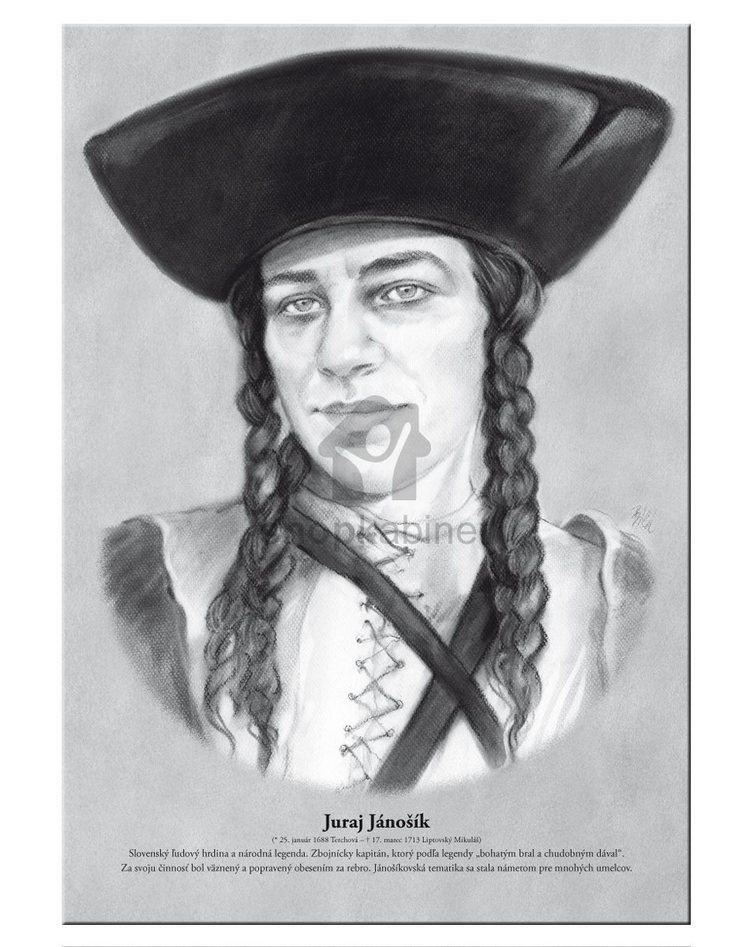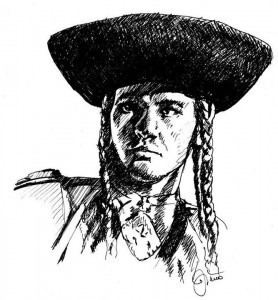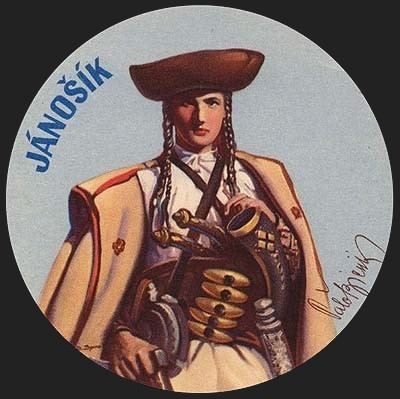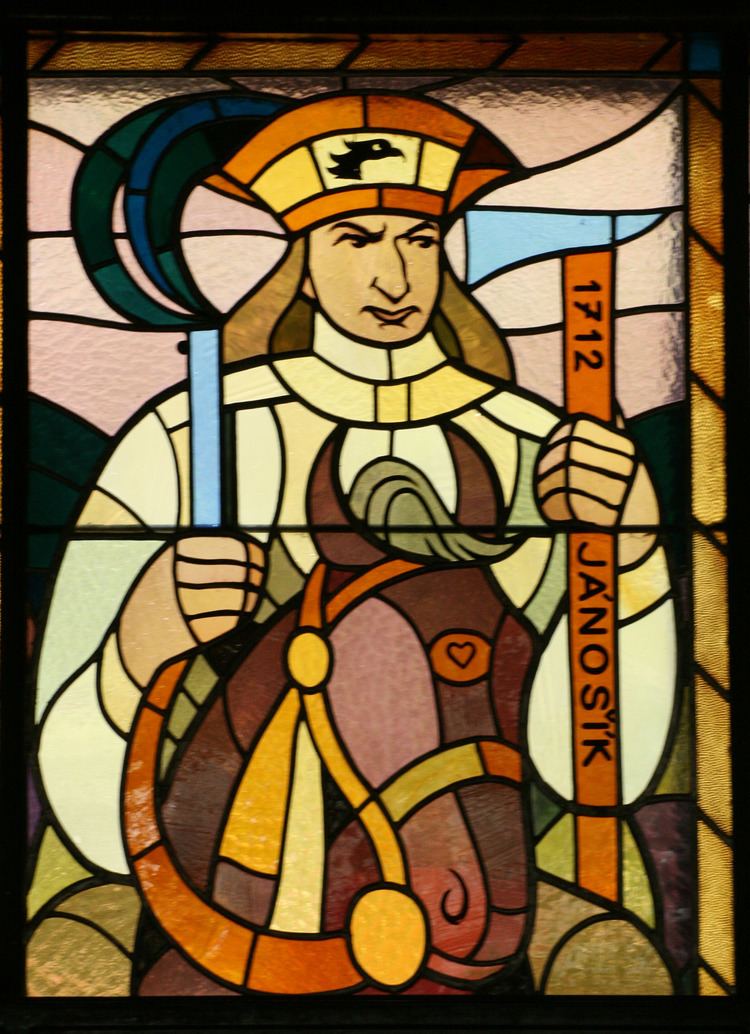Known for Slovak folk hero Role Highwayman | Name Juraj Janosik | |
 | ||
Born January 1688 Terchova, Zilina District, Zilina Region, Slovakia, Kingdom of Hungary Nationality Hungarian (ethnic Slovak) Other names Juro Janosik, Jurko Janosik, Jerzy Janosik, Janosik Gyorgy, Martin Mravec Occupation soldier, prison guard, highwayman Died March 17, 1713, Liptovsky Mikulas, Slovakia Parents Martin Janosik, Anna Cisnikova Siblings Adam Janosik, Barbora Janosikova, Jan Janosik, Martin Janosik Similar People Agnieszka Holland, Katarzyna Adamik, Marek Perepeczko, Vaclav Jiracek, Jiri Mahen | ||
325th Birthday of Juraj Jánošík Google Doodle [HQ]
Juraj Janosik (first name also Juro or Jurko, [ˈjuraj ˈjaːnoʃiːk]; Polish: Jerzy Janosik [ˈjeʐi jaˈnoɕik], Hungarian: Janosik Gyorgy; baptised January 25, 1688, died March 17, 1713) was a famous Slovak highwayman. Janosik has been the main character of many Slovak and Polish legends, novels, poems and films. He is a semi-legendary character in East-Central Europe.
Contents
- 325th Birthday of Juraj Jnok Google Doodle HQ
- Biography
- Other members of Janosiks group
- Janosik in film
- Janosik in literature
- In music
- References

According to the legend, he robbed nobles and gave the loot to the poor, a deed often attributed to the famous Robin Hood. The legend was also known in neighbouring Silesia, the Margraviate of Moravia and later spread to the Kingdom of Bohemia. The actual robber had little to do with the modern legend, whose content partly reflects the ubiquitous folk myths of a hero taking from the rich and giving to the poor. However, the legend was also shaped in important ways by the activists and writers in the 19th century when Janosik became the key highwayman character in stories that spread in the north counties of the Kingdom of Hungary (much in present Slovakia) and among the local Gorals and Polish tourists in the Podhale region north of the Tatras (Tatra). The image of Janosik as a symbol of resistance to oppression was reinforced when poems about him became part of the Slovak and Czech middle and high school literature curriculum, and then again with the numerous films that propagated his modern legend in the 20th century. During the anti-Nazi Slovak National Uprising, one of the partisan groups bore his name.

Biography

Janosik was born shortly before his baptism on January 25, 1688. His parents were Martin Janosik and Anna Cisnikova from Terchova. His godparents were Jakub Merjad and Barbara Kristofikova. His first name, ("George" in English) has been a very common name all over Europe and his last name is still common around his birthplace.
He grew up in the village of Terchova (Tyerhova) in the Habsburg monarchy's Kingdom of Hungary area (present-day Zilina District in northwestern Slovakia). He fought with the Kuruc insurgents when he was fifteen. After the lost Battle of Trencin, Janosik was recruited by the Habsburg army. In autumn 1710, as a young prison guard in Bytca (Nagybiccse), he helped the imprisoned Tomas Uhorcik escape. They formed a highwayman group and Janosik became its leader at the age of 23, after Uhorcik left to settle in Klenovec. The group was active mostly in northwestern Kingdom of Hungary (today's Slovakia), around the Vah (Vag) river between Vazec (Vazsec) and Vychodna (Vichodna), but the territory of their activity extended also to other parts of today's Slovakia, as well as to Poland and Moravia. Most of their victims were rich merchants. Under Janosik's leadership, the group was exceptionally chivalrous: They did not kill any of the robbed victims and even helped an accidentally injured priest. They are also said to share their loot with the poor and this part of the legend may be based on the facts too.
Janosik was captured in autumn 1712 and detained at the Mansion of Hrachov, but was released soon afterwards. He was captured again in spring of 1713, in the Uhorcik's residence in Klenovec (Klenoc). Uhorcik lived there under the false name Martin Mravec at that time. According to a widespread legend, he was caught in a pub run by Tomas Uhorcik, after slipping on spilled peas, thrown in his way by a treacherous old lady. Janosik was imprisoned and tried in Liptovsky Svaty Mikulas (Liptoszentmiklos, present Liptovsky Mikulas).
His trial took place on March 16 and March 17, 1713 when he was sentenced to death. The date of his execution was not recorded, but it was customary to carry it out as soon as the trial was over. The manner of his execution, not in public awareness until the early 19th century, became part of his modern legend. A hook was pierced through his left side and he was left dangling on the gallows to die. This brutal way of execution was reserved for leaders of robber bands. However, sources diverge about how he was executed, and it is also possible that Janosik was hanged. A legend says that he refused the grace offered in exchange for enlisting soldiers of his abilities with the words: "If you have baked me so you should also eat me!" and jumped on the hook.
